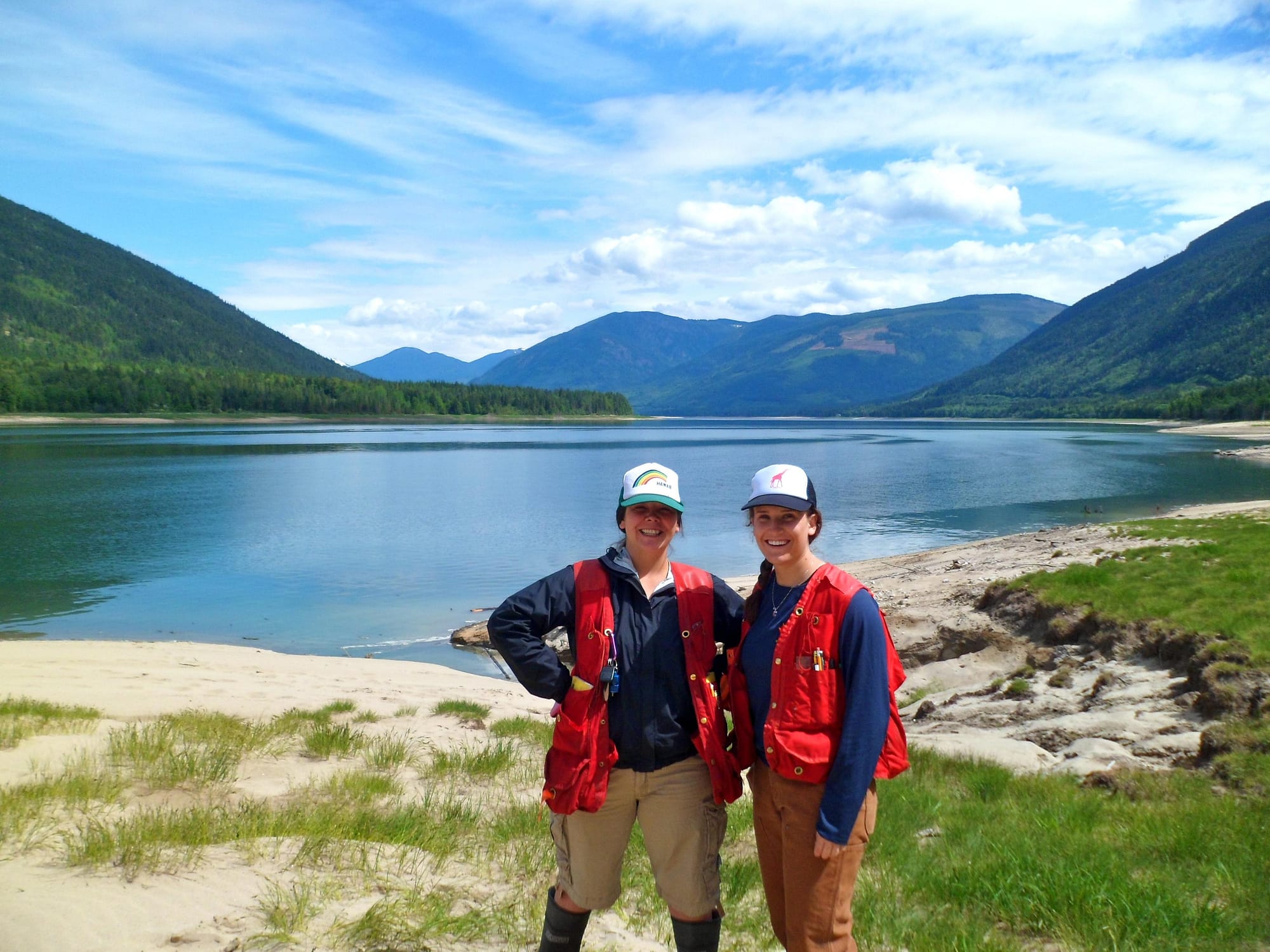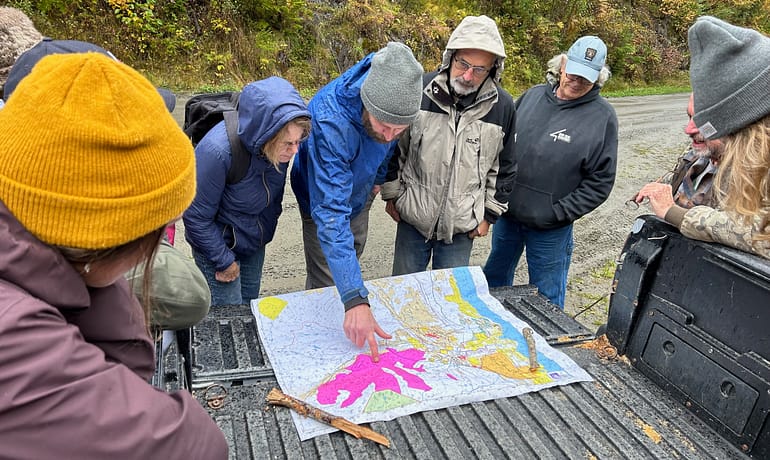You may or may not have seen Sandy Ramsden and Jenny Burrows around town, but the two forestry students have been working hard in the bush collecting data and preparing a 20-year plan for NACFOR.
Their work takes them into their field, the forest, to find out what kind of trees are growing in what kind of terrain.
“We’re getting a better handle on what is out in there of forest cover types,” said Ramsden. The more information they get, the more detailed the level of planning they can make. Knowing what kind of trees are where means that as lumber prices change, the community forest will know where to cut and when for the greatest price per tree.
Prices of wood aren’t the only consideration when collecting data, said Ramsden. The students have been learning about forest health as well, and how that can impact a forestry business.
“It’s not about counting stems, it’s about volume and quality,” she told the Arrow Lakes News.
Doing a checkup on forest health means finding out what other organisms are living alongside the trees, or sometimes on trees. The parasitic fungus Armillaria is an issue in forest health because it can get into the roots and reduce the volume of the trees, for example.
Ramsden, who grew up in the Slocan valley, hopes to work locally when she is done, but recognizes that people hold onto their jobs here. Water is where she wants to continue to work with and study, including the fish and other animals that live in and around our dammed water systems. Ramsden is part of the Faculty of Forestry and has found the economic side of field measurements an interesting part of her experience in Nakusp.
Originally from the boroughs of Toronto, Burrows would love to stay near the mountains, and is grateful that she has had the opportunity to work here, thanks to an anonymous private sponsor behind the field study.
Although she was initially apprehensive about forestry, considering herself more of a tree hugger, she said she really enjoyed the program and now wants to work in forestry. Burrows agreed that it was interesting to see the ‘on the ground’ impact of collecting and analyzing data.
“What you decide directly affects the land,” she said, noting that community forests are flexible and can be very responsive to different concerns in the community.
Ramsden agreed, comparing community forests to a fine filter, looking at on-the-ground realities for the community. As an example, the students saw how NACFOR had changed their cut to accommodate mushroom pickers’ worries that a prime patch would be destroyed by logging, preserving some mushroom turf.
Getting out and seeing what people in forestry are doing on the block has been very educational, said Burrows. Seeing well-harvested areas and how they feed into other phases of the forestry industry has been instrumental in developing the long-term plan for the community forest. Data like silviculture surveys will be uploaded into a database that will be used for planning.
But it’s not all on-the-ground work. Burrows said she has “learned a lot” reading local historian Milton Parent’s detailed history of logging in the area. And what the pair has learned from past and present will be used to create a plan for the future use of NACFOR’s community forest.
Related Post
Province increases funding for community forest wildfire risk reduction
News Release We are pleased to announce that the
BC introduces new measures on old growth, innovation, forest stewardship
New announcement on process and funding for policy reforms



